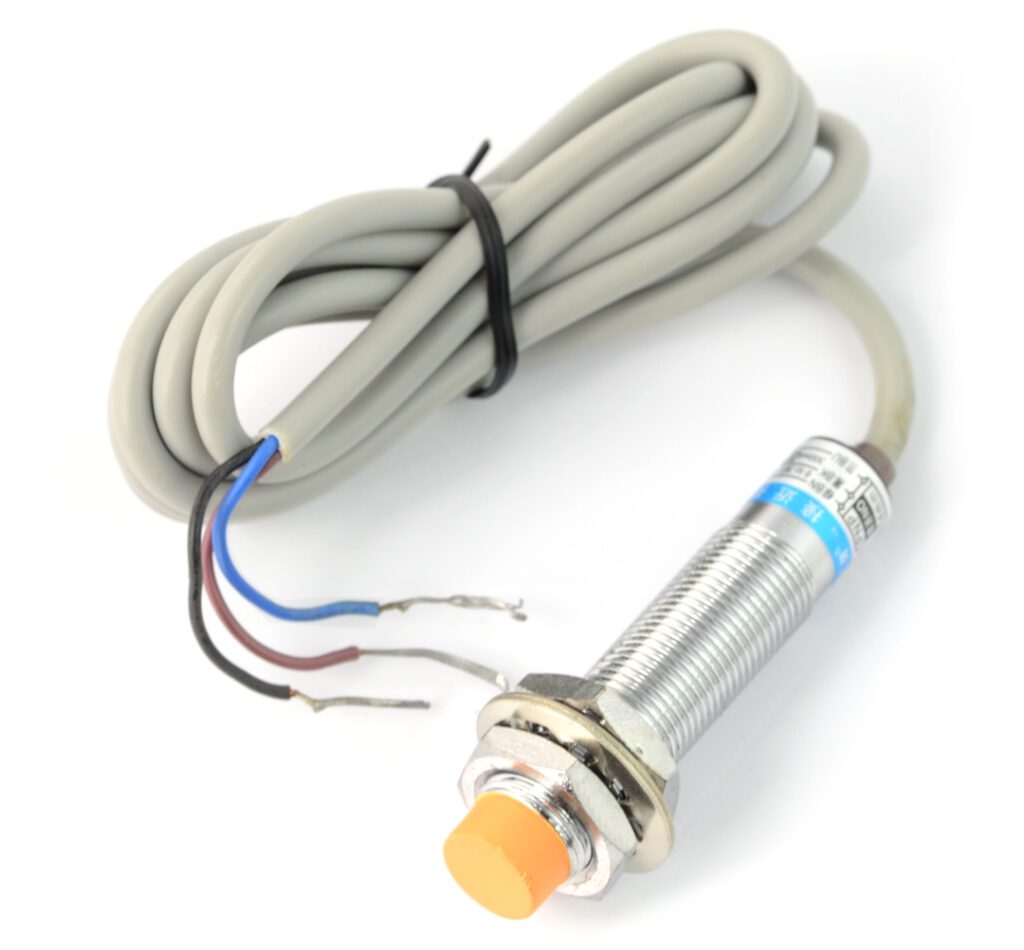Table of Contents:
Inductive sensors are key components of modern industry, without which it is difficult to imagine effective process automation. Find out how they work, where they are used and what their advantages are. Read to the end, expand your knowledge and apply it to your electronic projects. Here we go!
Inductive sensors - what exactly are they?
Inductive sensors
are advanced electronic devices capable of detecting metallic objects without direct physical contact. They work on the basis of the phenomenon of electromagnetism, generating a magnetic field that is sensitive to changes caused by the presence of metal.
The functioning of inductive sensors is based on several key principles:
- The principle of electromagnetism – inductive sensors generate a magnetic field that changes in the presence of metal;
- non-contact – inductive sensors do not require direct contact with the metal to be detected, which means they can operate in harsh environments such as high temperatures, pressure or humidity;
- versatility – inductive sensors can be used in a variety of industrial sectors – from industrial automation, to automotive, to the broader technology sector.
On what principle do inductive sensors work?
How they work
inductive sensors
? To understand the principle of operation of these remarkable devices, it is useful to understand first of all that their basic element is a coil that generates a magnetic field. When a metal object is near the coil, the field changes. This change is then sensed and converted into an electrical signal, which is interpreted by the control device.
The principle of operation of inductive sensors is based on the laws of physics, namely the phenomenon of electromagnetic induction. This law states that in the presence of changes in the magnetic field, a voltage is induced in a conductor. Inductive sensors use this principle for metal detection. The magnetic field they generate, in the presence of metal, undergoes changes that are recorded by the sensor.
As a result, inductive sensors are able to detect metals even if they are not directly on the surface of the sensor, giving them a huge advantage over other types of sensors.
Where are inductive sensors used?
Inductive sensors
, due to their reliable performance and versatility, are widely used in many areas of industry. Wherever precise and reliable detection of metal objects is needed, inductive sensors are an indispensable tool. Let’s find out in which industry sectors these advanced devices are making their presence felt.
Here are examples of specific applications of inductive sensors:
- industrial automation – inductive sensors are the foundation of many automated processes, using their ability to quickly and accurately detect metallic components, even in the most difficult conditions;
- automotive industry – from distance measurement to position control to motion monitoring, the diverse applications of inductive sensors in the automotive industry are invaluable;
- Metallurgical industry – in conditions of extreme temperature and pressure, inductive sensors are ideal for metal detection and process monitoring;
- Technology sector – the diverse applications of inductive sensors extend to the technology sector, where they are used to monitor and control processes that require great precision.
From the above list, it is clear that inductive sensors are key tools in modern industry that have revolutionized the way many different processes are conducted.
Benefits of using inductive sensors
About the benefits of using
inductive sensors
in industry could be talked about for hours. First of all, these advantages are due to their specific properties. Inductive sensors, with their ability to detect metallic objects without contact, offer state-of-the-art solutions where other detection methods may fail. This means higher efficiency and safety of industrial processes. With inductive sensors, it is possible to avoid damage to machinery and equipment caused by direct contact with metal parts.
In addition, one of the key advantages of using inductive sensors is their versatility. We can find them in a wide range of sectors, from industrial automation to automotive to metallurgy. Inductive sensors show high performance in harsh industrial environments such as high temperature, pressure or humidity. Finally, their reliability and durability cannot be forgotten, which minimize production downtime and maximize efficiency. The use of inductive sensors is therefore a step into the future world of business and the unlimited possibilities of industry.
Types of inductive sensors
Inductive sensors
is a rather broad category, in which many classes and models can be distinguished, capable of meeting various specific technological and industrial requirements. Different models differ in such parameters as size, detection range, type of construction, and type of signal output.
The most common types of inductive sensors are wired, wireless, and reduced voltage models. Hard-wired inductive sensors are most often used in industrial automation, where detection accuracy is crucial.
Inductive wireless sensors, on the other hand, are increasingly being used in IoT technology, providing remote monitoring and control capabilities. Reduced voltage models, on the other hand, are ideal where energy efficiency is a priority.
Highlighting the rich variety of types of inductive sensors, we can see how much these advanced devices have influenced the development and efficiency of modern technological and industrial processes.
How useful was this post?
Click on a star to rate it!
Average rating 0 / 5. Vote count: 0
No votes so far! Be the first to rate this post.




















